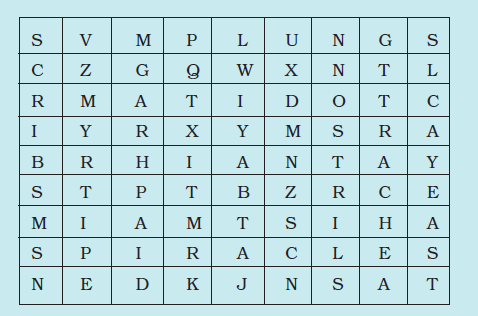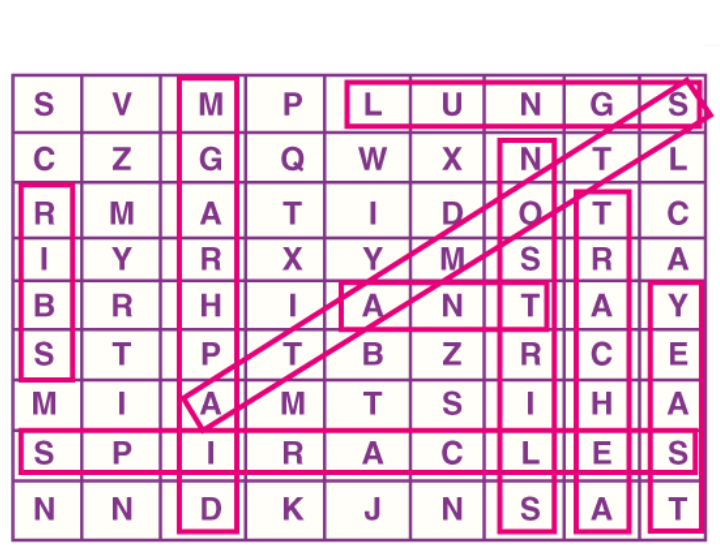Need help? We're here to assist you!
Thank You for Enquiry, we will contact you soon!
Close
The Class 7 is an important year in a student’s life and Science is one of the subjects that require dedication, hard work, and practice. It’s a subject where you can score well if you are well-versed with the concepts, remember the important formulas and solving methods, and have done an ample amount of practice. Worry not! Home Revise is here to make your Class 7 journey even easier. It’s essential for students to have the right study material and notes to prepare for their board examinations, and through Home Revise, you can cover all the fundamental topics in the subject and the complete NCERT Class 7 Science Book syllabus.

Exercise Questions
1. Why does an athlete breathe faster and deeper than usual after finishing the race?
Solution:
Athletes need a lot of energy during the race, and for the release of energy, they need a lot of oxygen; hence they breathe faster than usual after finishing the race.
2. List the similarities and differences between aerobic and anaerobic respiration.
Solution:
Similarities:
Differences
| Aerobic respiration | Anaerobic respiration |
| Takes place in the presence of oxygen | Takes place in the absence of oxygen |
| End products are CO2 and H2 O | End products are CO2 and alcohol |
| Produces a large amount of energy | The energy released is less when compared to aerobic respiration |
| It occurs in most plants and animals | Occurs in yeast and some bacteria |
3. Why do we often sneeze when we inhale a lot of dust-laden air?
Solution:
When we inhale dust-laden air, the dust irritates the nose; as a reflexive action, dust is thrown out through sneezing.
4. Take three test tubes. Fill ¾th of each with water. Label them A, B and C. Keep a snail in test tube A, a water plant in test tube B and in C, keep both the snail and plant. Which test tube would have the highest concentration of CO2 ?
Solution:
Test tube A will have the highest concentration of CO 2 because test tube A has a snail which expels out CO 2 into the tube. Since a plant is present in both test tubes B and C, the plant will inhale CO 2 to decrease CO 2 concentration. Thus, there will be less concentration of CO 2 in these tubes.
5. Tick the correct answer:
(a) In cockroaches, air enters the body through
(i) lungs (ii) gills (iii) spiracles (iv) skin
(b) During heavy exercise, we get cramps in the legs due to the accumulation of
(i) carbon dioxide (ii) lactic acid (iii) alcohol (iv) water
(c) Normal range of breathing rate per minute in an average adult person at rest is
(i) 9–12 (ii) 15–18 (iii) 21–24 (iv) 30–33
(d) During exhalation, the ribs
(i) move outwards (ii) move downwards (iii) move upwards (iv) do not move at all
Solution:
a) (iii) spiracles
b) (ii) lactic acid
c) (ii) 15–18
d) (ii) move downwards
6. Match the items in Column I with those in Column II:
| Column I | Column II |
| (a) Yeast | (i) Earthworm |
| (b) Diaphragm | (ii) Gills |
| (c) Skin | (iii) Alcohol |
| (d) Leaves | (iv) Chest cavity |
| (e) Fish | (v) Stomata |
| (f) Frog | (vi) Lungs and skin |
| (vii) Trachea |
Solution:
| Column I | Column II |
| (a) Yeast | (iii) Alcohol |
| (b) Diaphragm | (iv) Chest cavity |
| (c) Skin | (i) Earthworm |
| (d) Leaves | (v) Stomata |
| (e) Fish | (ii) Gills |
| (f) Frog | (vi) Lungs and skin |
7. Mark ‘T’ if the statement is true and ‘F’ if it is false:
(i) During heavy exercise, the breathing rate of a person slows down. (T/F)
(ii) Plants carry out photosynthesis only during the day and respiration only at night. (T/F)
(iii) Frogs breathe through their skins as well as their lungs. (T/F)
(iv) Fishes have lungs for respiration. (T/F)
(v) The size of the chest cavity increases during inhalation. (T/F)
Solution:
i) False
ii) False
iii) True
iv) False
v) True
8. Given below is a square of letters in which are hidden different words related to respiration in organisms. These words may be present in any direction — upwards, downwards, or along the diagonals. Find the words for your respiratory system. Clues about those words are given below the square.

(i) The air tubes of insects
(ii) Skeletal structures surrounding the chest cavity
(iii) Muscular floor of the chest cavity
(iv) Tiny pores on the surface of a leaf
(v) Small openings on the sides of the body of an insect
(vi) The respiratory organs of human beings
(vii) The openings through which we inhale
(viii) An anaerobic organism
(ix) An organism with a tracheal system
Solution:
(i) Trachea
(ii) Ribs
(iii) Diaphragm
(iv) Stomata
(v) Spiracles
(vi) Lungs
(vii) Nostrils
(viii) Yeast
(ix) Ant

9. The mountaineers carry oxygen with them because:
(a) At an altitude of more than 5 km, there is no air.
(b) The amount of air available to a person is less than that available on the ground.
(c) The temperature of air is higher than that on the ground.
(d) The pressure of air is higher than that on the ground.